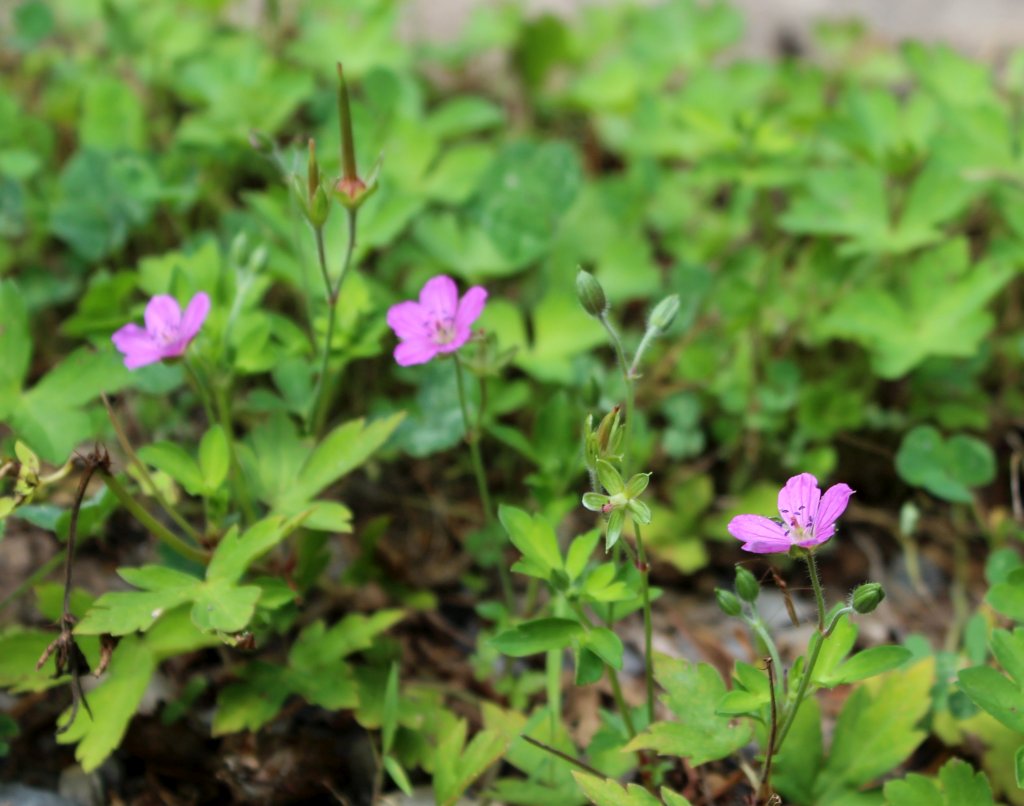This little hot pink weed drew my attention as I was weeding the herb patch.
It looks like a miniature Wild Geranium which blooms in late Spring, but this plant grows its vegetation in the summer and blooms a few months after the wild geraniums are done blooming for the year.

It is a geranium for sure, take a look at the simple flower construction and the long “beaked” seedpod at the top left.
How to find out which geranium, you ask? Of course the Internet can be your friend in seeking answers to all your questions, but sometimes an old-fashioned book is worth its weight in gold.
Try flipping through the color sections of Peterson’s Wildflower Field Guide to find a similar-looking drawing and read the specifics about your look-a-like plant. Match up the flower and leaf descriptions and you’re good to go!
Another great book to use for flowering plant identification is Newcomb’s Wildflower Guide. It uses a key system to identify our pretty flowering friends. Decide if the flower construction is simple or irregular. If simple, how many repeating parts are there? In this case each flower has “5” pink petals. Answer similar questions to identify the plant type and leaf type and Newcomb will lead you to your flower.
If it’s a flower I’ve seen before and just can’t remember the name, I’ll flip through Peterson’s guide and usually find it quickly. Sometimes Newcomb’s guide can help you find a new plant faster, especially if it’s a flowering vine or shrub. Each book has their strengths and both are invaluable in the field, so take one along on your next wildflower walk.